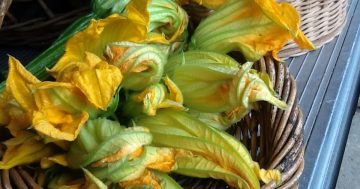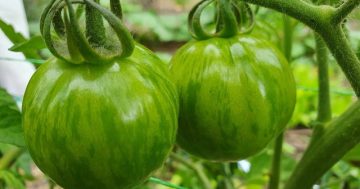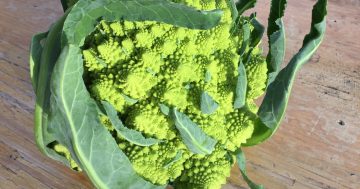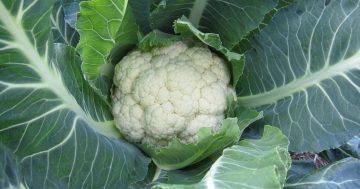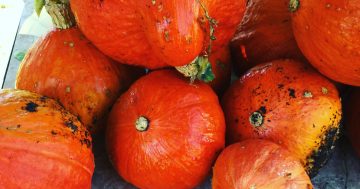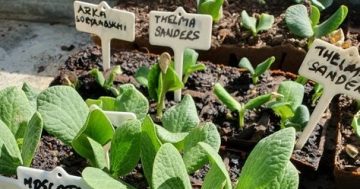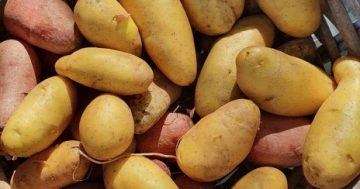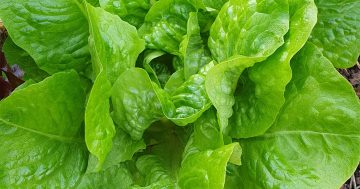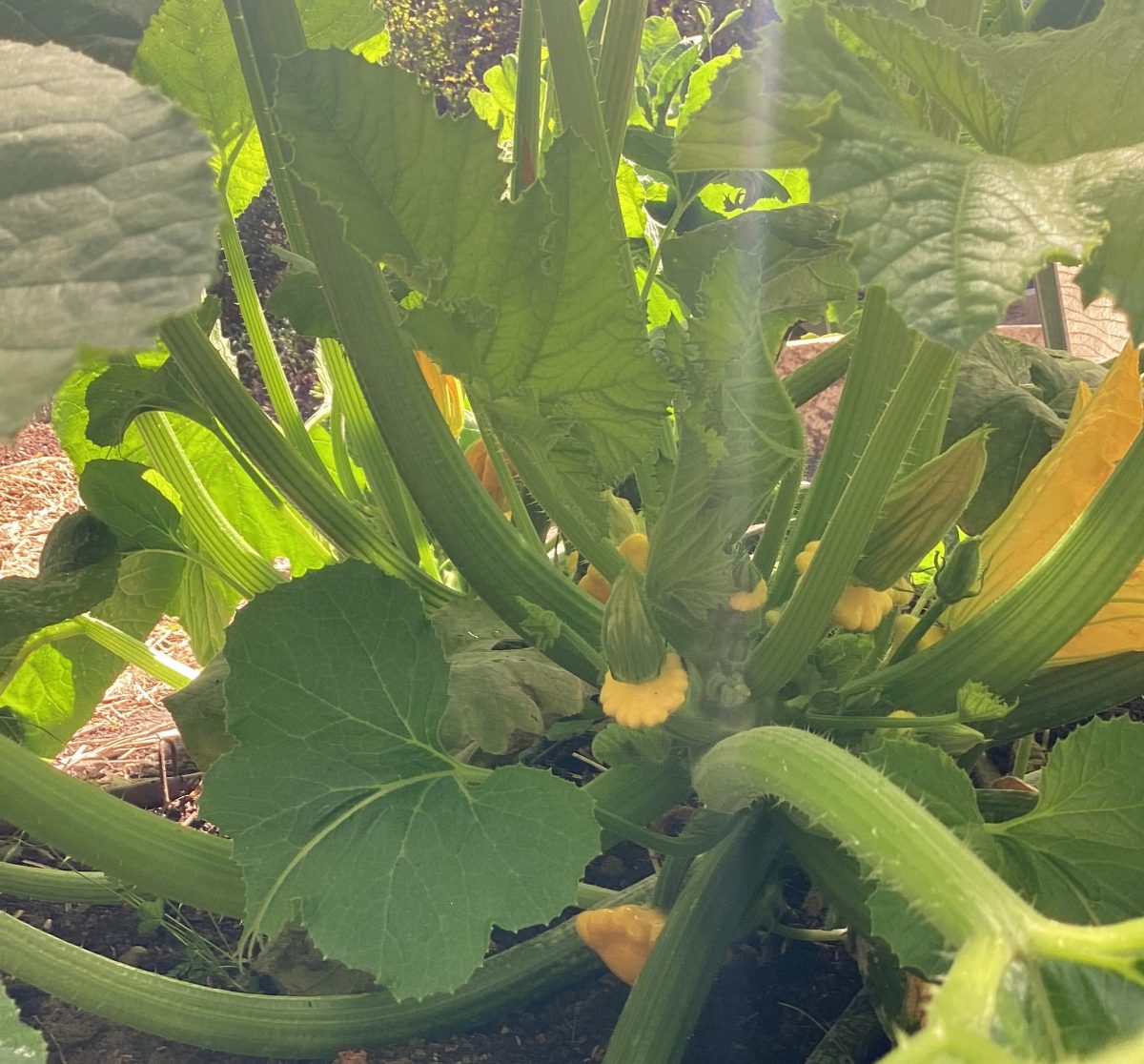
Summer pumpkins will thrive with more sunlight. Photo: Supplied.
The end of spring saw another cold snap across the region with snow in the mountains and hailstorms. The early spring planted tomatoes and chillies may not have fared too well.
The Bureau of Meteorology is predicting another summer of mild day-time temperatures and increased rainfall.
If you waited until November to plant tomatoes, peppers, basil, and fingerling eggplants they should start to benefit from the sunshine that has been sneaking in between those cool, rain-burst days giving these plants a well-needed boost.
It’s still possible to plant out seedlings of these favourite summer vegetables. Tomatoes and chillies planted in December should be ripening by February.
It’s a good idea to play it safe during this dynamic weather change. Keep agricultural cloth at the ready to throw over to increase heat and protect plants from heavy rain.

Covering plants at risk from a sudden cold snap. Photo: Supplied.
Increase successional planting across the season instead of planting only once and increase the numbers of each vegetable you plant, so plant loss caused by uncertain weather may not affect the entire season’s crop of that vegetable.
Playing it safe also means contingency planting. Plant wet and cool tolerant greens such as silverbeet, beetroot, Asian greens, Asian turnips, carrots, parsnips and radishes, cabbages and broccolini. If January and February are damp and cool you will still be eating lots of lovely leafy greens.
It is also a good idea to plant seedlings instead of seeds where possible. Since the weather is so variable it is best to shorten the time plants, especially as seeds, are spending in the ground, giving summer vegetables the best chance to ripen.
The biggest garden task will be keeping summer vegetables healthy: wet, moist days with high humidity increase the likelihood of mould and fungal diseases.
In wet weather plants lying on or close to the ground are more likely to experience bacterial and fungal diseases. A key aim is to increase air circulation within and around plants, while also enabling plant leaves to dry quickly.
Keep tomatoes well staked and use vertical structures for cucumbers, melons and pumpkins. Increasing planting distance allows for air circulation with less chance of spreading mould spores and air-borne diseases. Think anti-COVID-19 strategies!
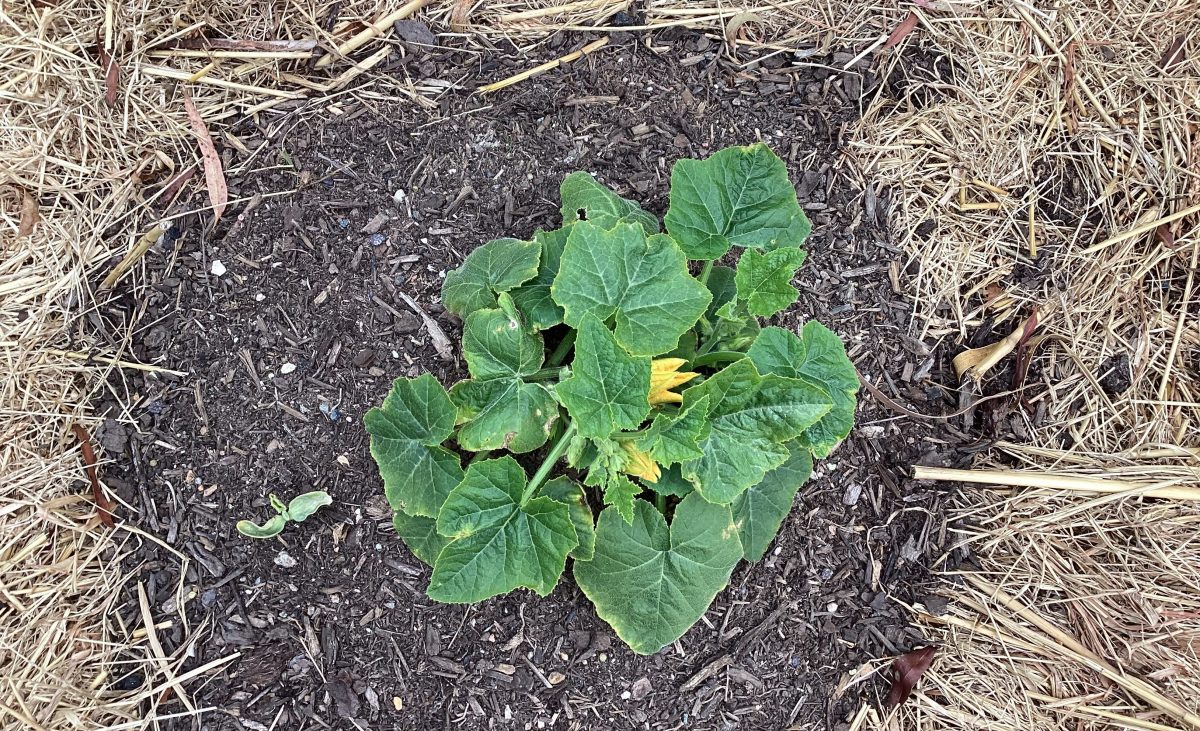
Small pumpkin flowers are a seasonal response to cool weather. Photo: Supplied.
It’s also not too late to plant out squash and pumpkin as seedlings. At this time of year it is probably best to plant zucchini, squashes such as scallopini; or summer pumpkins.
Summer pumpkins are those where the fruit is harvested and consumed in the summer as opposed to winter pumpkins which are harvested and stored to eat over winter. Summer pumpkins are smaller and take around 75 to 90 days to reach maturity from seed.
Varieties include bush pumpkins such as golden nugget; buttercup, pottimarron and blue ballet. Winter pumpkins like butternut, jarrahdale, Australian butter and Queensland blue take 110 to 120 days from seed to harvest.
You may have noticed that your pumpkin seedlings are already producing flowers with very little vine growth. The flowers are predominantly male and this is the plants’ response to the late spring cold snap. Some warmer days should see the plants respond positively and focus on vine growth. Pumpkins and squash respond well to the extra warmth provided by a cover in a cold snap.
Pests to look for this summer will be aphids, snails and earwigs due to the wet weather, and of course those pesky white cabbage butterflies. Cabbage whites lay eggs on brassica leaves (cabbage, broccoli, Asian greens) and rocket, and hatching caterpillars munch away at the leaves.
The biological control Dipel has various trade names and any of the organic oil based pesticides (Neem or garden oil) are also effective. Regular spraying is essential especially after rain as it washes away.
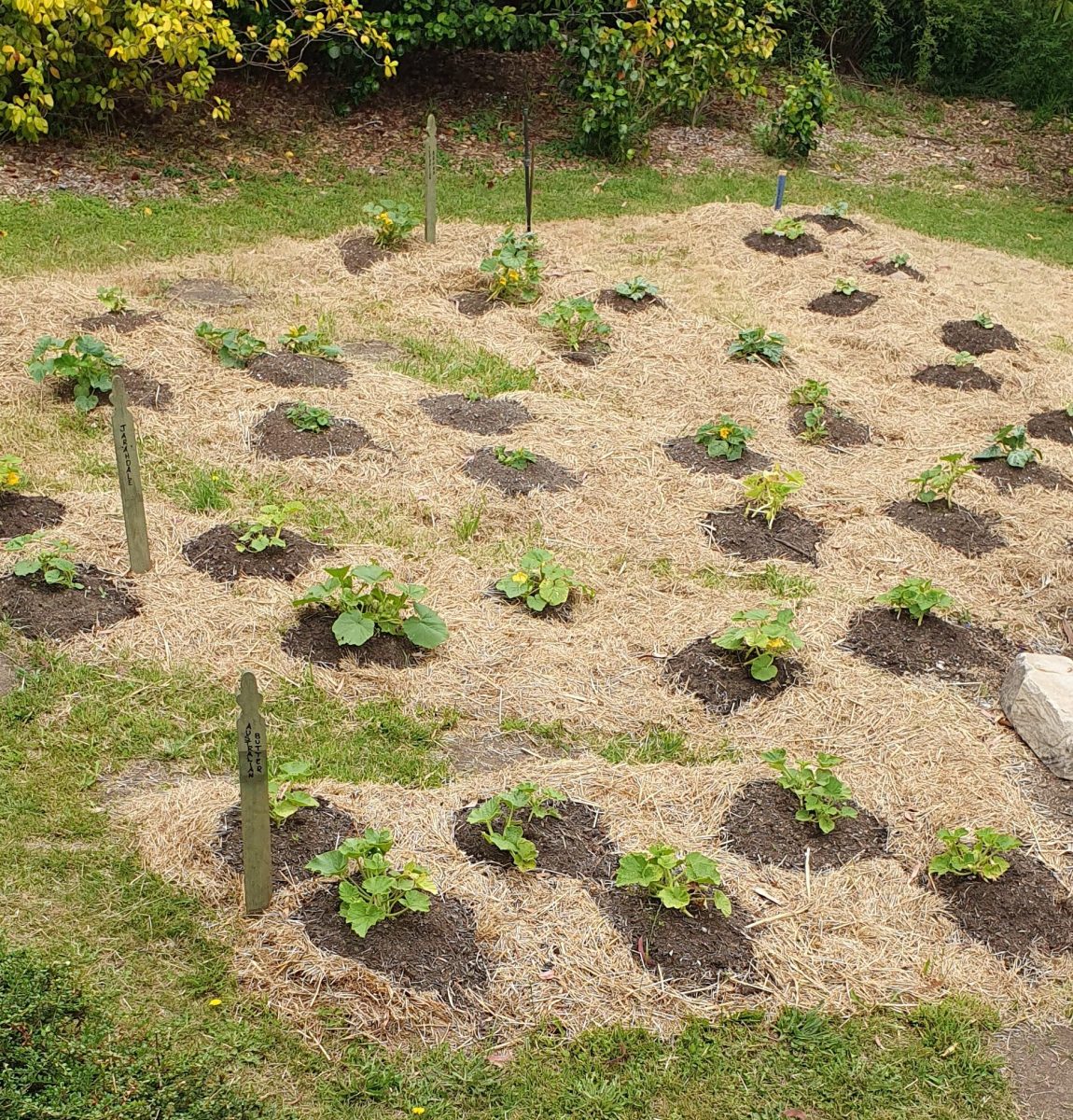
Plant multiples to avoid losing crops in changeable weather. Photo: Supplied.
Equally effective is scrubbing the eggs off the leaves and squashing the caterpillars. Regular applications of organic slug and snail deterrent, will also be necessary. Watch for aphids and white fly and use insecticidal soap spray regularly for these little critters. They might be tiny but they can cause a lot of damage.
If you are heading out to buy seedlings it’s time to start looking for Brussels sprouts and other brassica. In cool/cold climate regions of NSW these can be planted throughout the summer.
Brussels sprouts in particular need lots of time to grow sturdy with a height of about a metre. The strong tall central stem and leaves provide a frame to support the sprouts as they grow nestled under each leaf stem. Plant them as seedlings anytime from late December to early February. You can experiment with staggering plantings to give you an extended harvest time.
Bronwyn Richards and Helen Lynch run Wynlen House Artisan Village Farm and Learning Centre, a small village organic market garden in Braidwood, NSW. Since 2006 they have grown and sold fresh vegetables, eggs, preserves and garlic and teach others to do the same.












